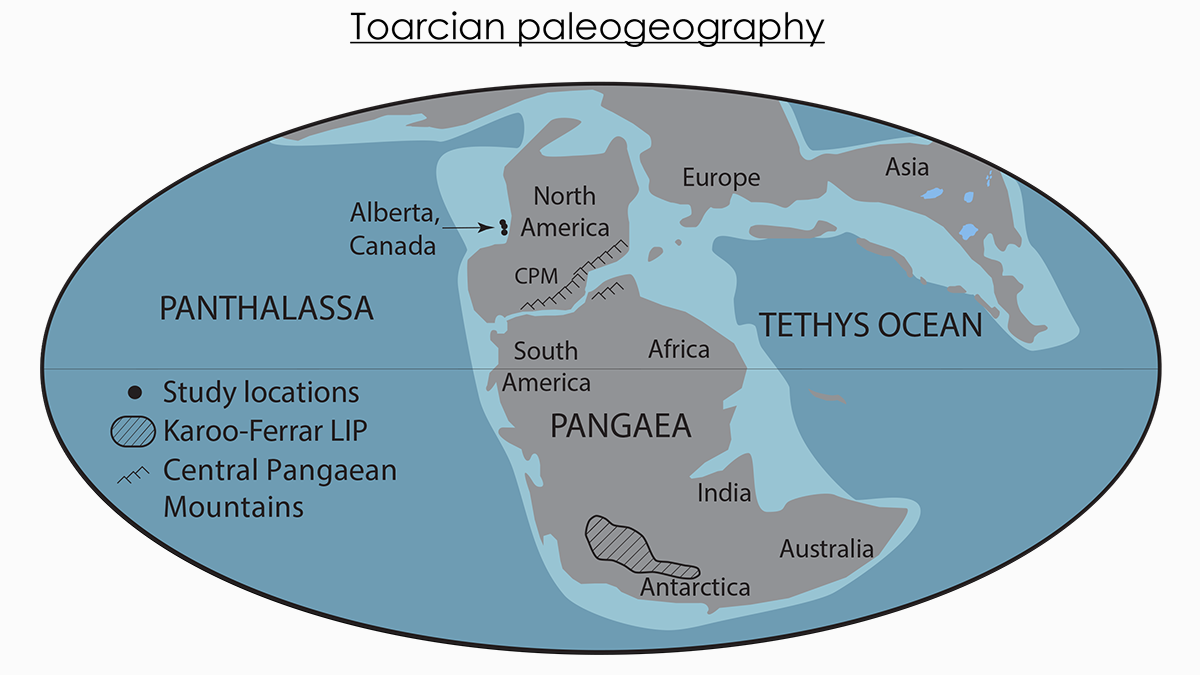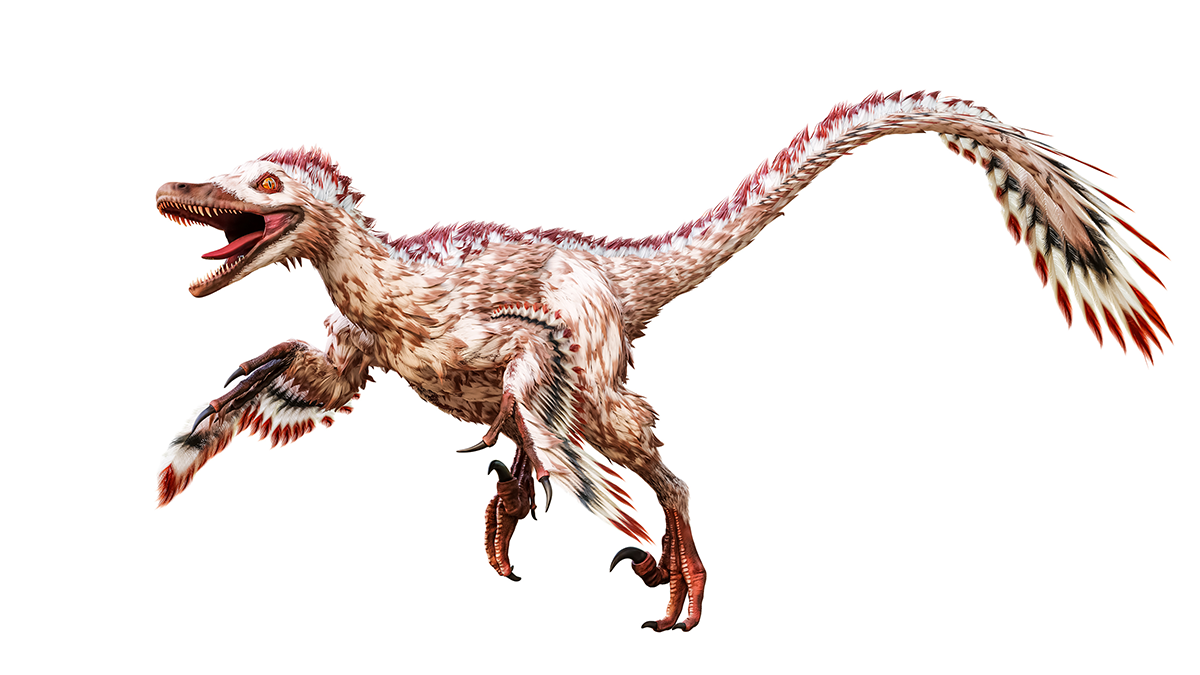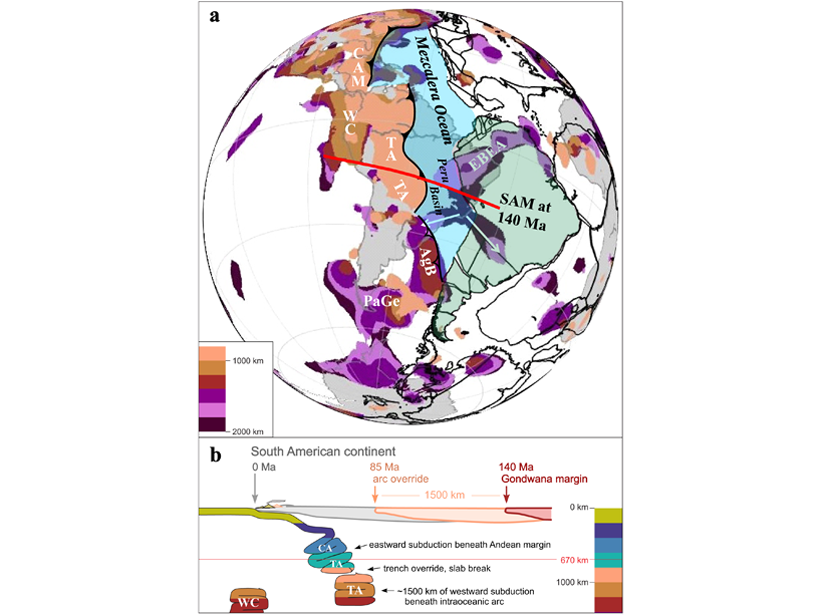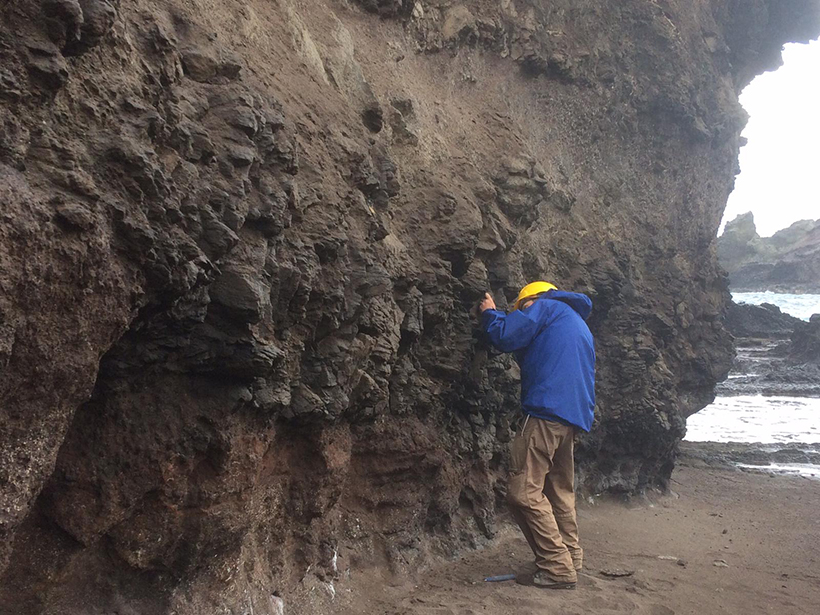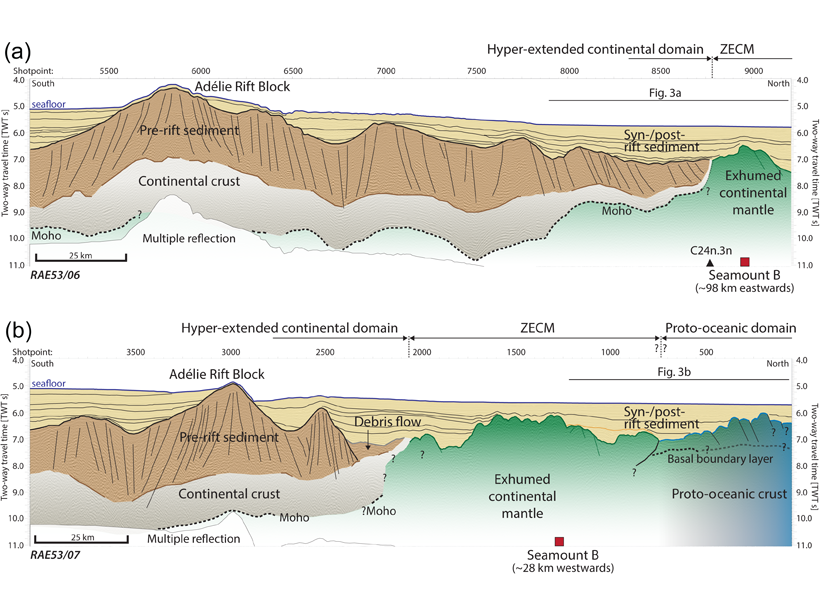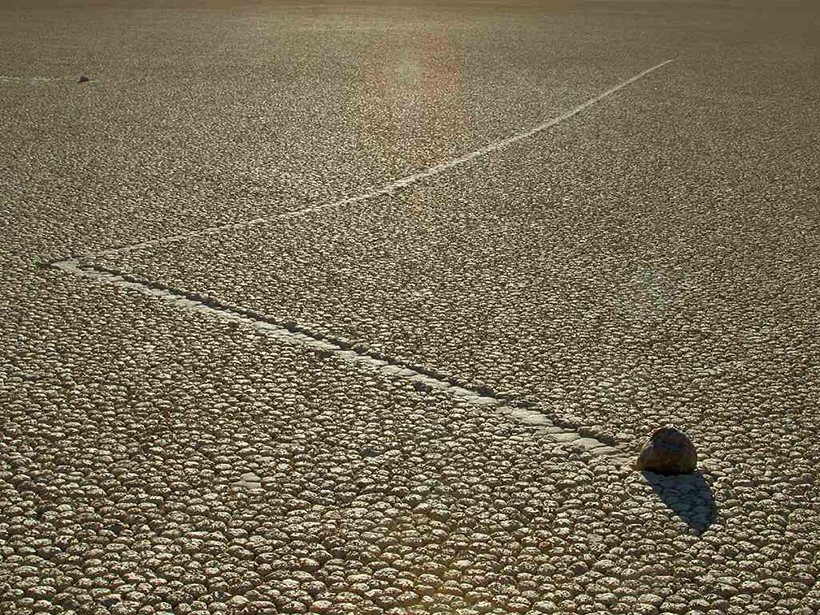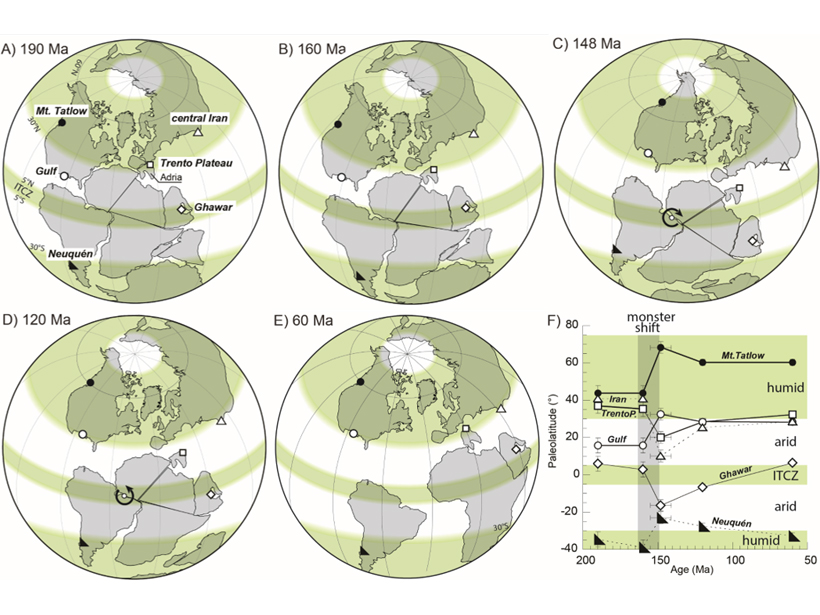The reconstructed loss of molybdenum during the Toarcian ocean anoxic event suggests deeply anoxic conditions during this time period allowing massive amounts of organic carbon being buried.
Jurassic
Volcanic Winters Ushered in the Jurassic Reign of the Dinosaurs
Sediment cores from northwestern China reveal freezing conditions during the Late Triassic killed off many forms of life—but not dinosaurs.
Previous Intra-oceanic Subduction Found Beneath South America?
Newly mapped fast velocity slabs in the lower mantle may be remnants of westward dipping intra-oceanic subduction, before flipping to the present eastward subduction beneath South America at 85 Ma.
Probing the Age of the Oldest Ocean Crust in the Pacific
A new study extends the calibration of the Mesozoic Sequence down to the Mid Jurassic with multiscale marine magnetic anomaly data, demonstrating extraordinarily high reversal frequency.
A Robust Proxy for Geomagnetic Reversal Rates in Deep Time
The strength of Earth’s magnetic field in the distant past can tell scientists whether the planet’s magnetic poles were steady or prone to frequent reversals.
New Data from Earth’s Largest Non-Volcanic Rift Margin
Seismic reflection images combined with petrological data provide new constraints on the nature of the basement in the enigmatic Australia-Antarctic oceanic-continent transition zone.
Does This Fossil Reveal a Jurassic Tropical Freeze?
On view for over a century, a fossil slab may display evidence of tropical freezing during the Jurassic, but scientists never noticed it—until one finally did. Some colleagues are not convinced.
Extraordinary Polar Wander During the Late Jurassic?
Small amounts of polar wander have occurred during geological history, but whether larger amounts occurred is still controversial. Did a truly large polar wander event really happen?
Simulating the Climate 145 Million Years Ago
A new model shows that the Intertropical Convergence Zone wasn't always a single band around the equator, which had drastic effects on climate.

